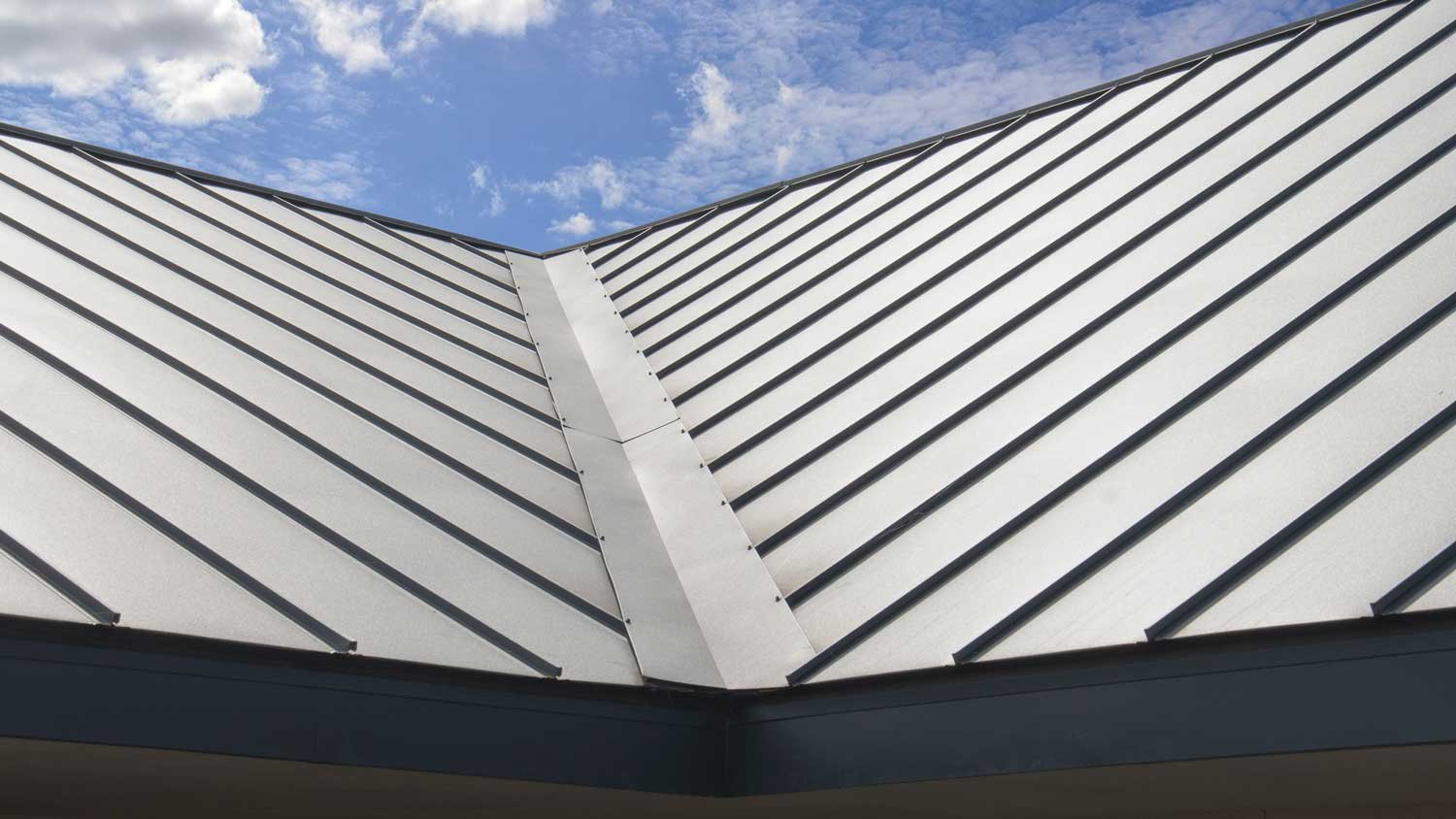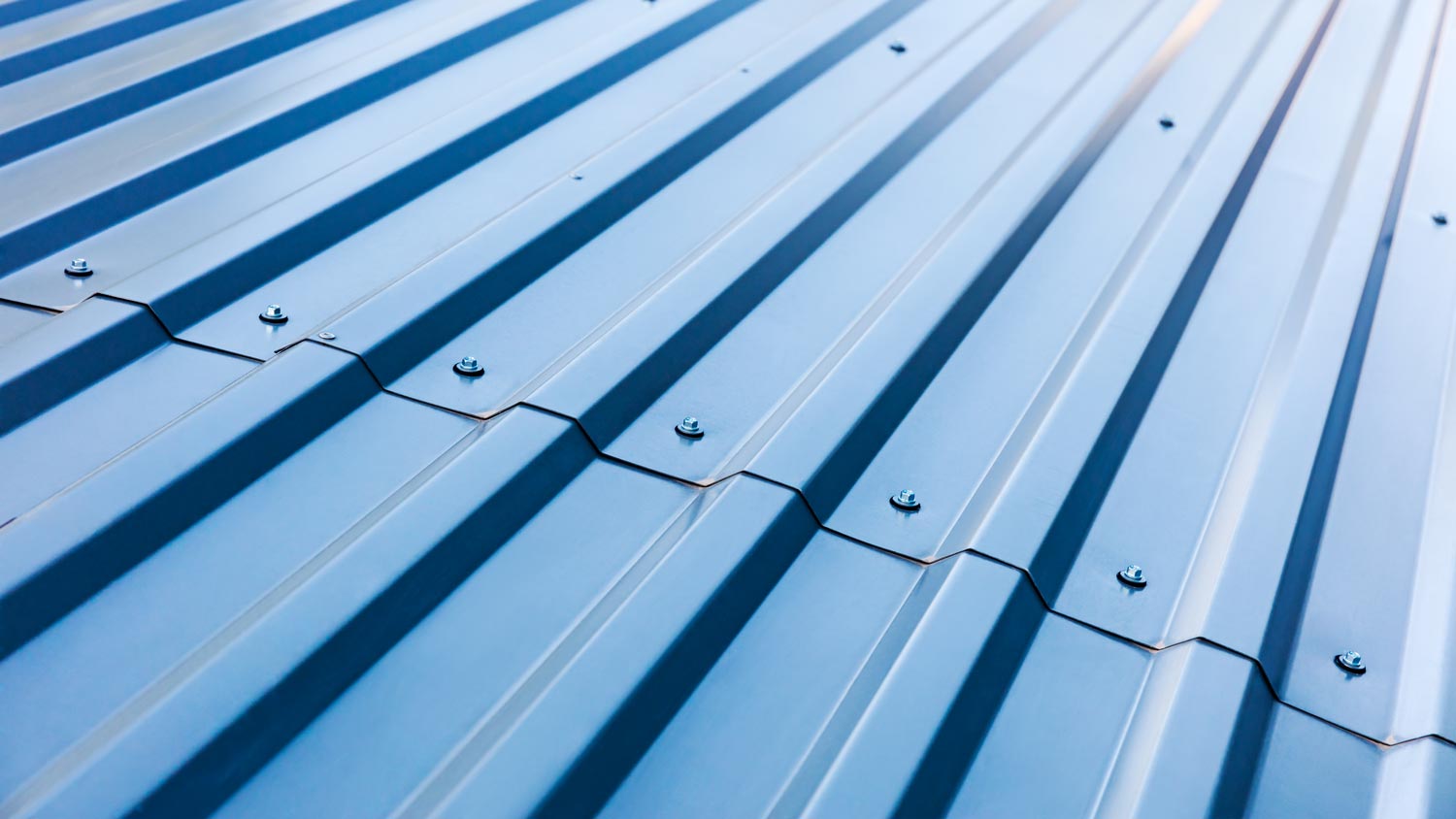Standing Seam Metal Roof vs. Screw Down
Choose a metal roof that will stand the test of time


Standing seam metal roofs have hidden fasteners, providing a much cleaner, more modern appearance.
Screw down metal roofs have exposed fasteners that add wind resistance but don’t look as nice.
Screw down metal roofs are a more budget-friendly option at half the price, but they have a much shorter lifespan and are more prone to leaks.
Metal roofs are great options for curb appeal, longevity, long-term value, and their ability to shed snow easily. But when it comes to standing seam metal roofs versus screw down metal roofs, which is better? In this guide, we’ll explain the differences and help you decide which is the better option for your needs and budget.
Standing Seam Metal Roof vs. Screw Down: Key Differences
The biggest difference between a standing seam metal roof and a screw down metal roof is the appearance. Standing seam metal roofs look nicer, thanks to hidden fasteners, which also help reduce the risk of roof leaks. Screw down metal roofs offer less curb appeal and have a shorter lifespan, but they cost about half as much and are better in areas that see extreme winds.
What is a Standing Seam Metal Roof?

A standing seam metal roof is made out of metal panels with tall ridges between the panels, which hide the fasteners that hold the roof down. You can choose from a variety of metals, including steel, aluminum, zinc, and copper.
| Pros | Cons |
|---|---|
| Nicer appearance | Higher cost |
| Lower leak risk | Wind resistance |
| Longer lifespan |
Best for:
Homeowners looking to maximize curb appeal and property value
Homes in areas that see heavy rain or snowfall
Long-term value
Pros of a Standing Seam Metal Roof
The biggest practical benefit of a standing seam metal roof is the leak resistance. All of the fasteners are hidden, which means there’s minimal opportunity for rain and snowmelt to enter your home through roof penetrations.
Standing seam metal roofs also look much nicer because of those hidden fasteners, so this type of metal roof will boost your home value and curb appeal more.
Finally, standing seam metal roofs last for 50 to 70 years, nearly twice as long as a screw down metal roof.
Cons of a Standing Seam Metal Roof
The most significant drawback of a standing seam metal roof is the up-front cost. While they last almost twice as long as screw down metal roofs, they’re also twice as expensive to install.
They also have fewer fasteners that can only appear under the raised seams, so they’re more likely to lift up in extreme winds. As such, they’re not as durable of an option in areas that see hurricanes, tropical storms, or tornadoes.
What Is a Screw Down Metal Roof?

A screw down metal roof is made of corrugated metal panels, which are also available in a variety of metal options, including steel, aluminum, and zinc. Copper isn’t as popular, as homeowners splurging on this luxury roofing material tend to prefer the cleaner look a standing seam roof provides. The fasteners are exposed and go directly through the visible roof into the decking below.
| Pros | Cons |
|---|---|
| Lower cost | Snow shedding |
| Wind resistance | Shorter lifespan |
| Risk of leaks |
Best for:
Homeowners looking for a lower installation cost
Homes in areas that see extreme winds
Pros of a Screw Down Metal Roof
The most notable benefit of a screw down metal roof is that it’s better at resisting uplift and damage in strong winds, making it a more durable option in areas that see tornado activity, hurricanes, and tropical storms.
Screw down metal roofs cost half as much to install, so they’re also a more budget-friendly option up front.
Cons of a Screw Down Metal Roof
Screw down roofs might be more affordable to install, but they lack the durability of a standing seam metal roof. You’ll get 30 to 45 years of useful life out of this option with proper maintenance, which is half of what you’d see from a standing seam metal roof.
The exposed fasteners on this type of roof aren’t as visually appealing, so they add less curb appeal and value to your home. The unprotected fasteners are also much more likely to leak, especially in areas that see above-average rainfall and snowfall.
Standing Seam Metal Roof vs. Screw Down
If you’re undecided when it comes to which metal roof is right for your home, consider the following factors.
Appearance: Standing Seam
Standing seam roofs have no visible fasteners, which means they have a much nicer, cleaner appearance. If you’re going for curb appeal, a standing seam roof is best.
Cost: Screw Down
Screw down metal roofs cost between $3.50 and $15 per square foot to install, depending on the materials you choose. Standing seam roofs cost twice as much, ranging from $7 to $30 per square foot.
Durability: Tie
Both metal roof options are extremely durable and will stand up well to foot traffic, hail, and blown debris. Both can dent, but the risk of punctures and resulting roof leaks is lower than you’d see from asphalt roofs.
Leak Resistance: Standing Seam
The fasteners on a standing seam roof are hidden and see less direct exposure to rain and snowmelt. This makes them significantly less likely to leak and a better option if you see frequent rainfall or heavy snow accumulation.
Lifespan: Standing Seam
Standing seam roofs will last for up to 70 years, while you’ll get a maximum of 40 years from a screw down roof. The overall value is about the same, given the difference in up-front cost, but you won’t need roof replacements as often if you go with a standing seam roof.
Availability: Tie
Most local metal roof installers that handle one type will also handle the other. In both cases, you’re unlikely to struggle to hire a roofer who can install the option you want.
Maintenance: Standing Seam
Both standing seam and screw down metal roofs require regular roof inspections and infrequent maintenance. However, the covered fasteners on a standing seam metal roof are less likely to need attention as your roof ages.
Severe Weather Resistance: Tie
Standing seam metal roofs are the superior option if your area sees above-average rainfall or snowfall, but screw down metal roofs will resist strong winds better. Take your local climate into consideration when deciding which is right for you. Both types of metal roofs can keep your home cool by reflecting sunlight, so they’re equally as beneficial for energy efficiency in hotter climates.





- Roofers
- Metal Roofing
- Roof Repair
- Roof Inspection
- Vinyl Siding Repair Contractors
- Flat Roofing Companies
- Commercial Roofing
- Emergency Roofing Companies
- Leaky Roof Repair
- Metal Roof Repair
- Business Roof Repair
- Flat Roof Repair
- Tile Roof Repair
- Slate Roofers
- Rubber Roofers
- Roofing & Siding
- Metal Roof Installation
- Affordable Roofing
- Roof Sealing
- Attic Ventilation Contractors










